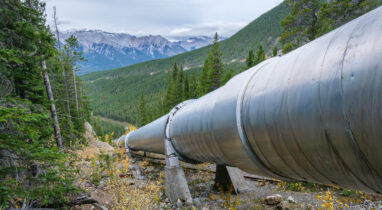Hybrid home heating systems — which combine electric air-source heat pumps with traditional natural gas furnaces — offer Ontario a practical and cost-effective path to significantly reducing emissions from home heating while protecting household budgets, says a new report from Clean Prosperity.
Widespread adoption of hybrid heating could reduce Ontario electricity system costs by 20%, compared to a fully electric approach, while still keeping Canada on track to meeting its long-term emissions reductions targets, the report finds.
“Hybrid heating offers the best of both worlds for existing homes: lower emissions than sticking with natural gas and, if paired with price-optimizing thermostats and electricity prices that encourage off-peak use, lower household utility costs,” said Benjamin Dachis, report co-author and vice president of research and outreach at Clean Prosperity. “This is the kind of pragmatic solution Ontario needs to cut household emissions and improve affordability.”
“This is the kind of pragmatic solution Ontario needs to cut household emissions and improve affordability.”
Benjamin Dachis, vice president of research and outreach at Clean Prosperity, and report co-author
As Canada decarbonizes, Ontario’s electricity demand will peak in the winter, not in the summer, as it currently does. Hybrid heating will ease pressure on the grid, compared to widespread adoption of all-electric heating. “Ontario’s grid will face a winter crunch as we electrify,” Dachis said. “Hybrid systems are like a pressure valve — they lower peak demand while still cutting emissions.”
Each hybrid system could save the Ontario electricity grid as much as $4,700 in avoided natural gas-power plant generation and infrastructure costs, compared to a scenario in which half of homes have a less flexible all-electric heating system.
These system savings should go to households to help defray the high cost of installing a heat pump. The Ontario government and electricity system planners should provide upfront subsidies to consumers switching to hybrid systems instead of using that money to build more natural gas-fired electricity plants.
This would be similar to Quebec’s plan to cover 80% of hybrid heating installation costs and offer an electricity rate structure tailored to hybrid systems. Ontario should adopt a similar model, so that heat pumps cost no more than conventional air conditioning systems, in order to unlock savings for households and the energy system.
“Most Ontarians replace their heating and cooling systems when something breaks. In those urgent moments, affordability is often the deciding factor,” Dachis said. “Hybrid systems can be the default, affordable choice, if governments design the right subsidies.”
In order to reap the dual benefits of lowering costs and reducing emissions through hybrid home heating, policymakers should:
- Make it easier for Ontario households to adopt hybrid heating systems. The federal and Ontario governments should subsidize a wide range of heat pumps and improve financing options, especially for emergency replacements.
- Assess the value of hybrid heating for the Ontario energy system under a competitive market. The Ontario government should direct the Independent Electricity System Operator to measure the capacity value of hybrid heating. This capacity value can be used to determine an appropriate household subsidy. Ontario should create incentives for all forms of flexible, dispatchable heating capacity through mechanisms such as capacity markets.
- Make it possible for Ontario households to get the most value from their hybrid heating systems. The Ontario government should direct the Ontario Energy Board to design electricity pricing options tailored to hybrid heating. As a simple first step, Ontario should allow customers to easily adopt ultra-low overnight rates only during winter months.
- Make it easier for more home heating trades workers to install heat pumps. Ontario should seek to harmonize training for gasfitters and heat pump technicians across provinces. Ontario should seek to persuade other provinces to recognize its Residential Air Conditioning Systems Mechanic trade certification and include it in the national Red Seal program.
“Decarbonizing doesn’t have to mean higher costs,” Dachis said. “Hybrid heating shows we can cut emissions in line with Canada’s 2050 targets while keeping household bills affordable.”
Read the report:
Photo credit: onepony from Getty Images Pro




